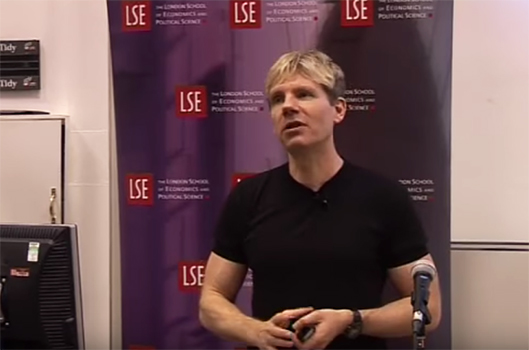New paper by Bjorn Lomborg suffers from fundamental methodological flaw

A new paper by Bjorn Lomborg, which has received publicity around the world, suffers from a “fundamental methodological flaw” which nullifies its conclusions, according to a commentary accepted for publication in the same journal, which has been released today (2 December 2015).
The commentary by Bob Ward of the Grantham Research Institute on Climate Change and the Environment and the ESRC Centre for Climate Change Economics and Policy at the London School of Economics and Political Science will be published alongside Dr Lomborg’s paper on ‘Impact of Current Climate Proposals’ in the February 2016 issue of ‘Global Policy’.
Dr Lomborg’s paper, which has been published early online and promoted heavily to the media, concluded that the pledges for cuts in emissions of greenhouse gases that have been submitted ahead of the United Nations climate change summit in Paris, would, at best, only reduce global warming by 0.17°C by 2100.
However, Ward’s paper points out that Dr Lomborg’s results are almost entirely attributable to the assumptions he made about annual emissions between 2030 and 2100.
Ward’s paper states: “Projections of global mean surface temperature for the period up to 2100 are based on cumulative annual global emissions of greenhouse gases up to the end of the century. While Lomborg (2015) purports to analyse the temperature changes associated with policies affecting emissions up to 2030, the author fails to acknowledge that the temperature projections to 2100 are determined primarily by assumptions that are made about cumulative annual global emissions over the 70-year period after 2030, rather than cumulative annual emissions during the period up to 2030.”
“The results cited by Lomborg (2015) are almost entirely due to the assumptions he makes about the post-2030 annual emissions from the United States, European Union and China. In each of these cases, annual emissions are assumed not to reduce any further, and in most cases, to rise. In some of his scenarios, emissions are assumed to rise by the end of the century to levels that reverse completely the effects of emissions reductions by 2030, and in some cases they also reverse the effects of emissions reductions that have occurred in the period up to 2015. As such, most of the scenarios used by Lomborg (2015) assume that climate policies are abandoned or reversed after 2030, and it is this assumption that primarily determines the projected global mean surface temperature in 2100. Hence, Lomborg (2015) does not investigate “the temperature reduction impact of major climate policy proposals implemented by 2030”.”
Ward also points out that the fundamental flaw in Dr Lomborg’s method means that his scenarios estimate that the pledges for emissions cuts in 2030 actually result in a bigger rise in temperature by 2100 than in some ‘business as usual’ emissions scenarios.
Ward’s paper states: “Lomborg (2015) hides this fact by choosing to compare his scenarios against the most extreme scenario (RCP8.5) described by the Intergovernmental Panel on Climate Change (2013), which assumes strong growth in annual emissions throughout this century, leading to carbon dioxide concentrations in the atmosphere of more than 900 parts per million by 2100 (compared with the pre-industrial concentration of 280 parts per million and about 400 parts per million today) and a mean rise in global surface temperature of 4.3°C.”
“Hence, a comparison of temperature projections based on the scenarios of Lomborg (2015), which depend largely on his extreme assumptions about post-2030 emissions, with RCP8.5 cannot be reasonably presented as an investigation into “the temperature reduction impact of major climate policy proposals implemented by 2030”.”
Ward said: “It is a mystery to me how Dr Lomborg’s paper survived peer review given that it contains such a fundamental methodological flaw. But Dr Lomborg is now aware of his mistake, and he should do the honourable thing by withdrawing his paper to prevent policy-makers from being misled by his erroneous conclusions.”
For more information about this media release, please contact Ben Parfitt b.parfitt@lse.ac.uk, or Bob Ward r.e.ward@lse.ac.uk.
NOTES FOR EDITORS
- The Grantham Research Institute on Climate Change and the Environment (https://www.lse.ac.uk/grantham) was launched at the London School of Economics and Political Science in October 2008. It is funded by The Grantham Foundation for the Protection of the Environment (https://www.granthamfoundation.org/).
- The ESRC Centre for Climate Change Economics and Policy (https://www.cccep.ac.uk/) is hosted by the University of Leeds and the London School of Economics and Political Science. It is funded by the UK Economic and Social Research Council (https://www.esrc.ac.uk/). The Centre’s mission is to advance public and private action on climate change through rigorous, innovative research.

